Onboarding is a crucial aspect of your company. How effective your company is at onboarding new employees will determine how successful your employees will be in their roles.
Nevertheless, onboarding shouldn’t be a neverending story as you need your new hires to start contributing and using their skills sooner rather than later.
Thankfully, there are a couple of things you can start doing right away to reduce onboarding time without sacrificing its quality.
This article will outline methods to implement that will help you reduce employee onboarding time and turn new hires into high-achieving members of your team.
Let’s dive right in!
Test New Hires Before Onboarding Starts
Onboarding is a comprehensive, long-term process.
Its purpose isn’t just to teach your new employees the specific work processes at your company, but also to integrate them into company culture and provide them with tools to become leaders in their own right.
Clearly, all of this cannot be achieved in a couple of days. However, the process can be made shorter if you spend less time training your employees in skills and procedures that they have already mastered.
So, how do you know which lessons to skip?
You simply have your employees complete skill assessments.
You can test them on each specific aspect of your onboarding process and then skip the parts of onboarding that they already excel at.

Source: Archbee.com
As you can see in the figure above, you can assess a variety of skills, capabilities, and traits.
The trick is to break your onboarding process into tangible skills you want your employees to master during onboarding and then create a test for each of them.
Better yet, you can use online assessment services like TestGorilla. They offer tests made by subject matter experts to assess almost any type of knowledge and skill you’ll ever need from your new hires.

Source: TestGorilla
Not only will this help you reduce onboarding time, but the assessment results will also point to specially gifted members of your team and tell you a lot about your employees’ talents and management skills.
Read recommendation: How to Write a Great Welcome to The Team Email
You’ll be able to use this information in the future to connect the best people to the key roles in your company.
Of course, employee assessment doesn’t have to be limited to the onboarding process.
In fact, 60% of employees take workplace assessments every year so that their progress and development can be tracked.
With so many benefits to be gained, that’s not surprising at all. If you haven’t made systematic employee assessment a staple of your company policy, we definitely recommend taking it into consideration.
Establish Fundamental Training Topics
The logical way to begin any training period or onboarding program is to start with the basics. Unfortunately, this is another way to lose some valuable time and prolong onboarding.
There’s a good chance most of your employees will already have a working knowledge of your industry and its systems, and you won’t be telling them anything new.
Instead of giving your new employees an introduction to your industry, try to establish some fundamentals that are specific and relevant to your company and the way you do things.
For example, Jonas Van de Steene, an experienced talent acquisition specialist, recommends immersing the new employee in the culture and the specific methodology of your company as soon as they step through the door.
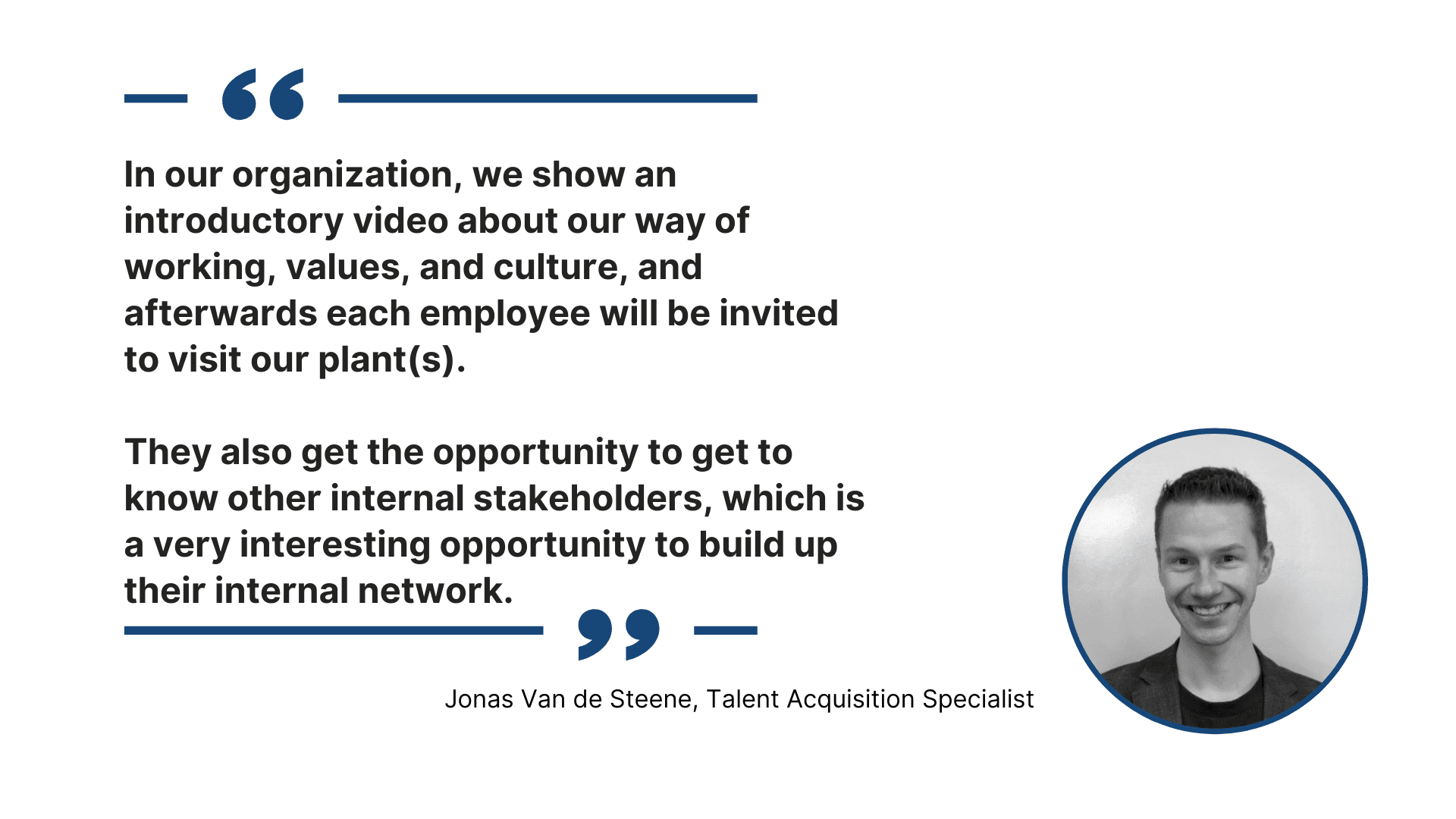
Quote from: Thinkwise
Along with shortening onboarding time, this will help your employee connect to their role in a more personal, profound way.
Having internalized the specifics of your approach to work, the employee is on a path to becoming a master of your work processes and an irreplaceable part of your team.
Of course, if you do find that a new employee has a gap in their knowledge relevant to your field of work, this should be addressed. A great way to do it is by providing tools and resources for the employee to learn independently.
For instance, say you hired an excellent writer for your content marketing team. As good as they are at their primary job (writing engaging articles for your blog), this employee doesn’t know how to use SEO software.
In that case, you could provide them with access to your SEO software’s academy and knowledge base.

Source: Ahrefs
These types of resources are especially useful for younger employees, such as interns, as well as employees making a career change and coming to you from a different industry.
Remember, the purpose of onboarding isn’t to create experts in a general sense, but masters of your specific work processes and methodology.
With that in mind, you can feel comfortable glossing over basic knowledge and diving straight into the specifics of your company.
Put New Employees on Easier Projects
There is an effective trick you can use to unlock faster learning with your new hires. It involves carefully gauging the difficulty of the tasks you delegate to them.
You probably already understand this intuitively, but let’s explain the principle all the same.
When we are handed tasks that are too difficult, we quickly become frustrated, overwhelmed, and stressed out. On the other hand, tasks that are too easy can make us feel bored and unchallenged.
The secret is finding that sweet spot in between that challenges your employee and keeps them engaged, without surpassing their skill level.
The tasks that engage employees at their optimal level of difficulty are tasks that enable real learning and skill development.
For new employees, this, of course, means starting out with easier tasks. As you’re only getting to know your employee, it may take you some time to determine the optimal difficulty level for their tasks.
Once you put them on their first project, you may soon find that it doesn’t quite fit their skill level. But that’s alright. After they’ve completed their first task, you can make the next one more or less difficult to better suit their abilities.
The winning formula is to start out with easier tasks and then gradually increase their difficulty to make sure the new employee is always advancing in their work and becoming more and more proficient in their work.
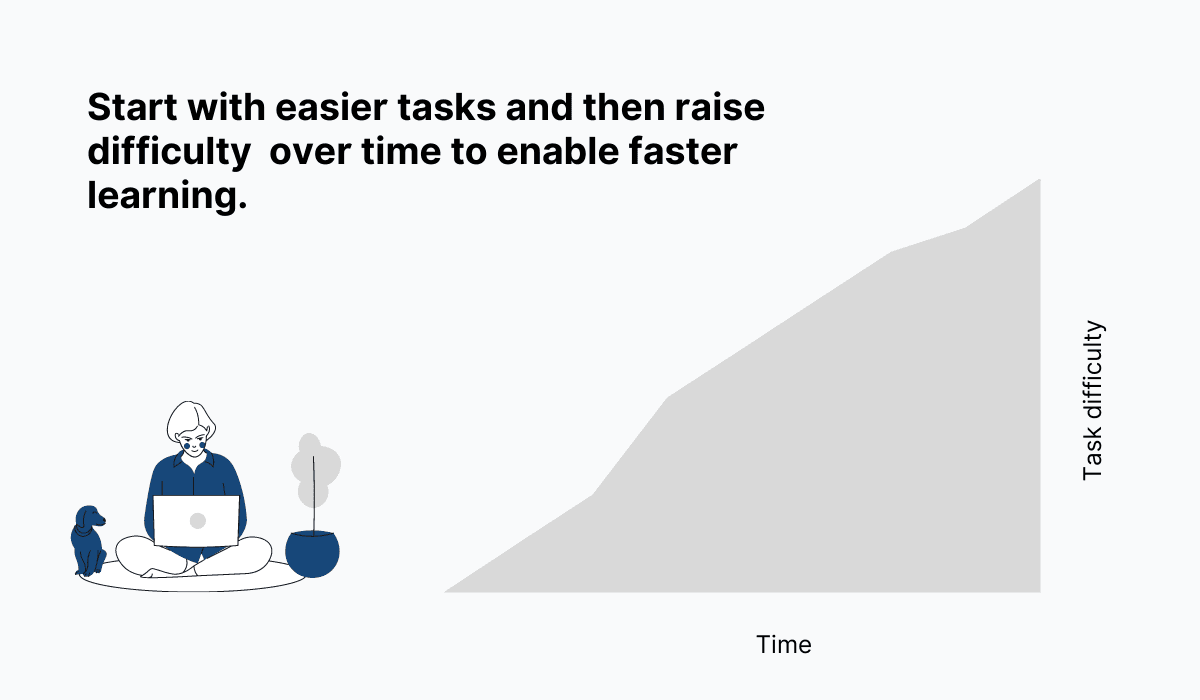
Source: Archbee.com
That way, your new employee progresses from novice to expert status in an onboarding process that never feels overwhelming or stressful.
This low-stress approach to onboarding also helps your employee feel satisfied and engaged, increasing your chances of retaining the employee long after onboarding has ended.
To sum up, putting new employees on easier projects at the beginning enables them to learn faster because they’re seldom in danger of getting stuck on a difficult task.
The best practice is to start on simple tasks and then increase the difficulty as onboarding progresses, always taking care to match the employee’s skill level.
Add Blended Learning
To reiterate a previous point, the best approach to employee onboarding doesn’t depend on you being present at all times and hand-holding new hires until they get their bearings.
If your new employee depends on you entirely for the onboarding process, you’re in danger of prolonging onboarding and making it inefficient.
After all, you have responsibilities outside of employee onboarding.
On the other hand, if employee is left to their own devices with online learning resources, they may feel isolated and detached from their colleagues.
E-learning won’t tell them much about the specific work processes of your company, meaning a lot of crucial knowledge isn’t being transferred.
Blended learning is a perfect combination of these two approaches.
With it, employees have the opportunity to develop the skills relevant to their role at the company using online resources, while also learning everything there is to know about their new company, including workflows, products, and key roles from their supervisors.
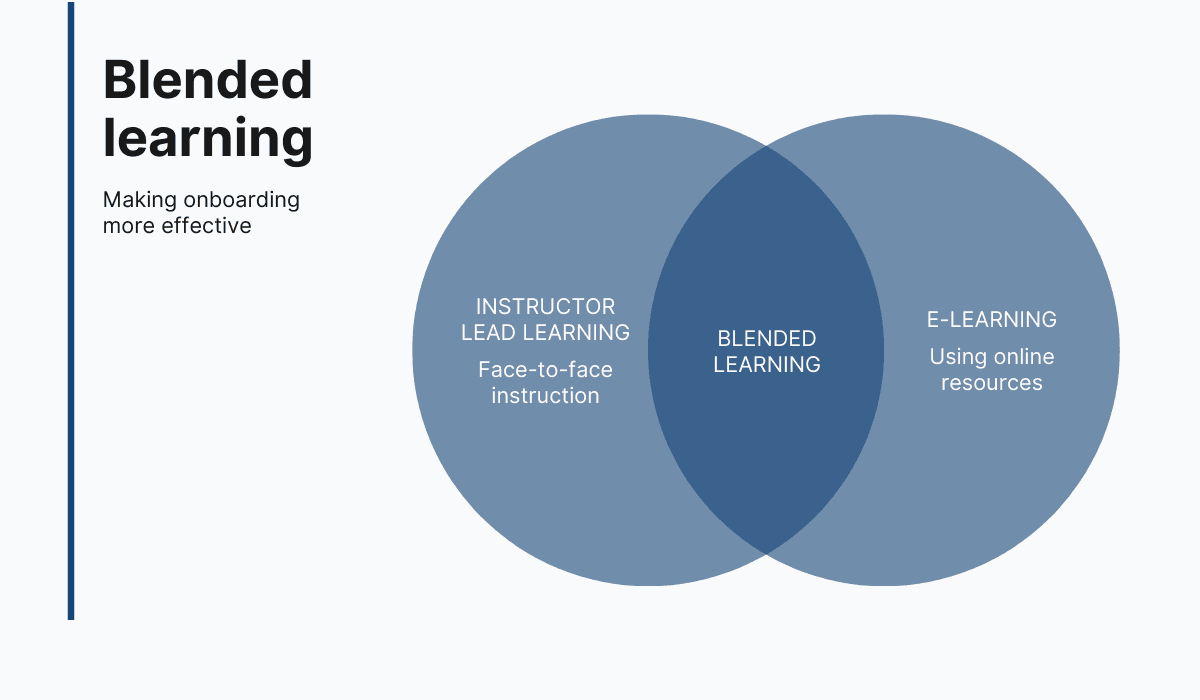
Source: Archbee.com
There are many resources available to you that you can use to enable your employees to learn even when you’re not there to provide instruction.
One of them is academies, which we’ve already mentioned in a previous section.
These are often a part of your company’s preferred software and you can use them to give your employees a course on using company systems.
Similarly, you can use e-learning services to deepen your employee’s knowledge on topics relevant to their role.
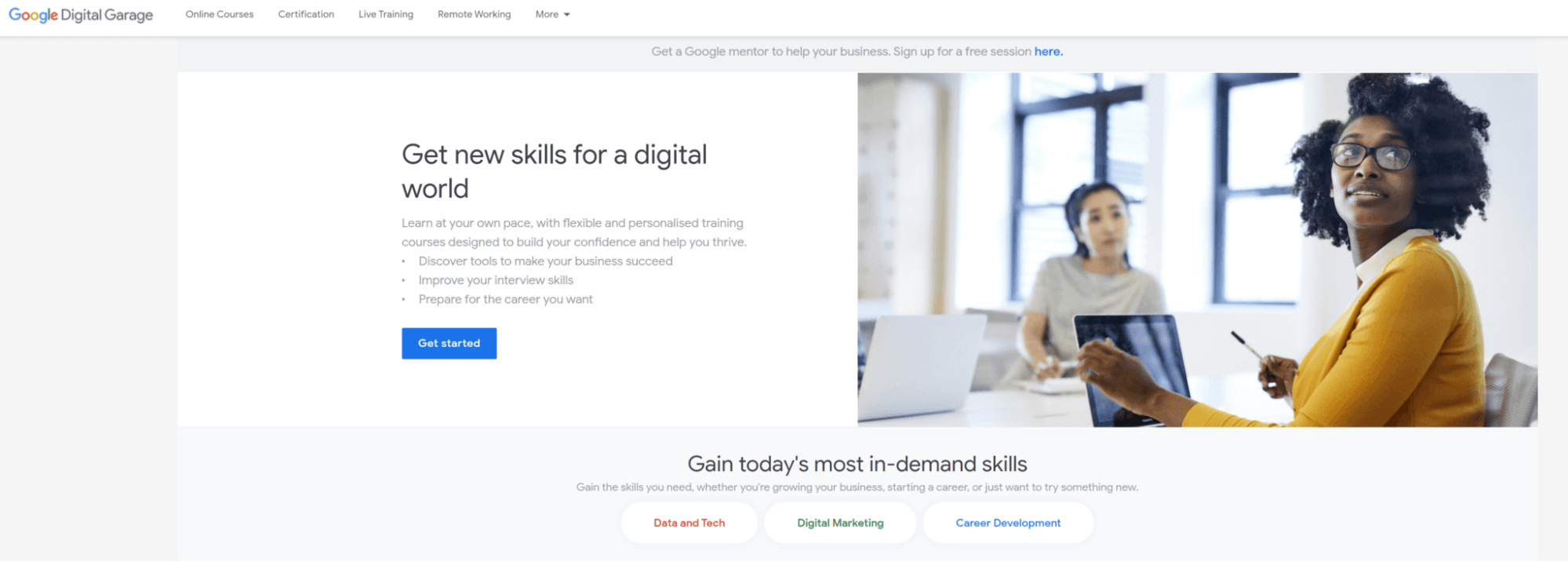
Source: Google Digital Garage
For example, if you want your employee to hone their digital marketing skills, you could have them complete a couple of courses on Google’s Digital Garage.
But e-learning doesn’t have to be limited to external resources. You can also build your company’s own knowledge base and then share it with new employees so that they can consult it whenever they need to.
Your knowledge base can be filled with internal documents on company policy, code of conduct, official procedures, product manuals, and anything else you might need.
As your company’s knowledge base will continually grow and encompass a vast quantity of information, it’s best to use documentation software, like Archbee, to organize it into a library that your employees will have no trouble navigating.
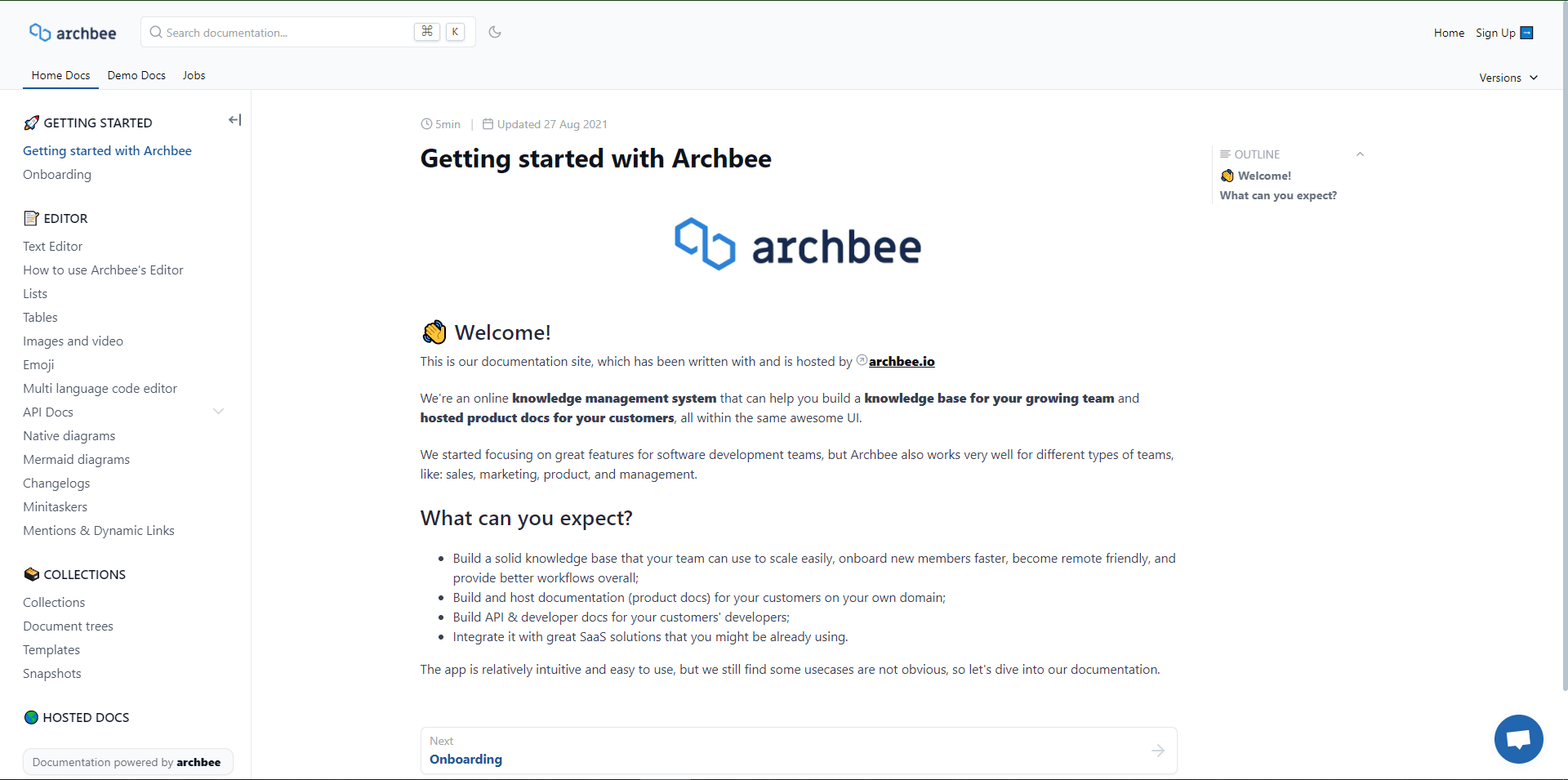
Source: Archbee.com
And since documentation software enables you to create pages for all of your company documents, your knowledge base will be available to every team member, at any time, and from anywhere.
To sum up, onboarding is a learning experience that works at an optimal pace when you’re using every resource available to you.
For optimal results and a speedy onboarding process, combine in-person training and e-learning into a blended approach to onboarding.
Provide Social Learning Opportunities
While it’s true that e-learning is an indispensable tool for a speedy and effective onboarding process, there’s nothing quite like a personal touch when it comes to learning the ins and outs of a new workplace.
Let’s face it, we all learn faster and retain knowledge better in a social setting, so it’s crucial for your onboarding methods to include opportunities for social learning.
And it’s not just us saying that. Employees everywhere have said that they prefer learning through collaboration.
One of the many surveys that reflects this fact was conducted by showd.me, which found that employees overwhelmingly find social learning to be the most effective method for onboarding.
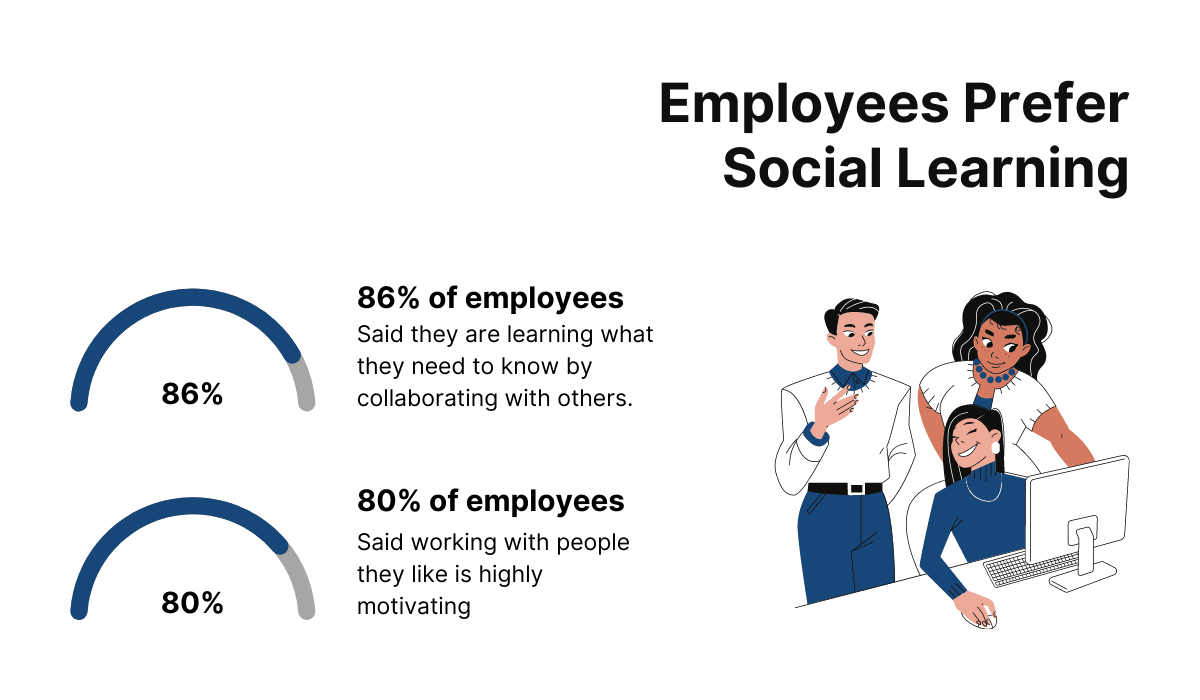
Data from: recruiter
So, what can you do to make onboarding more social?
Well, a great practice is to assign mentors.
In an onboarding situation, a mentor could be another member of the team who has the same rank as the new employee.
The mentor can show the new hire how things are done in the team and provide one of the first interpersonal connections at the company for the new employee.
Another great feature of the mentor system is the improvement of the new hire’s comfort level.
New employees often feel nervous going to their managers with simple questions, but a mentor is someone with whom they can feel more relaxed and ask for information more freely.
Another good idea is to pair off new employees or enable them to learn in groups.
The biggest benefit of group onboarding is, of course, the time you’re going to save because new employees will be presented with the same material at the same time, which avoids the need for repetition.
Group onboarding also allows new employees to start off on the same foot and therefore have an equal chance for success.
Finally, as with any group, new employees that go through onboarding together are very likely to form lasting ties to each other and, by extension, to your company.
Read recommendation: 15 Inspirational Welcome Messages for Your New Employees
As they say, no man is an island. This holds true even in the onboarding setting where people learn faster and retain more knowledge through social interaction, making the onboarding process considerably shorter and more efficient.
Create a Feedback Loop
As people who experience your onboarding process first hand, your employees can help you improve the process and make it more efficient in the future.
You can collect their ideas and suggestions by implementing a feedback loop for your onboarding process.
In a feedback loop, your task is to regularly collect feedback from your new employees, learn from it, and then act on it to improve and develop the process.
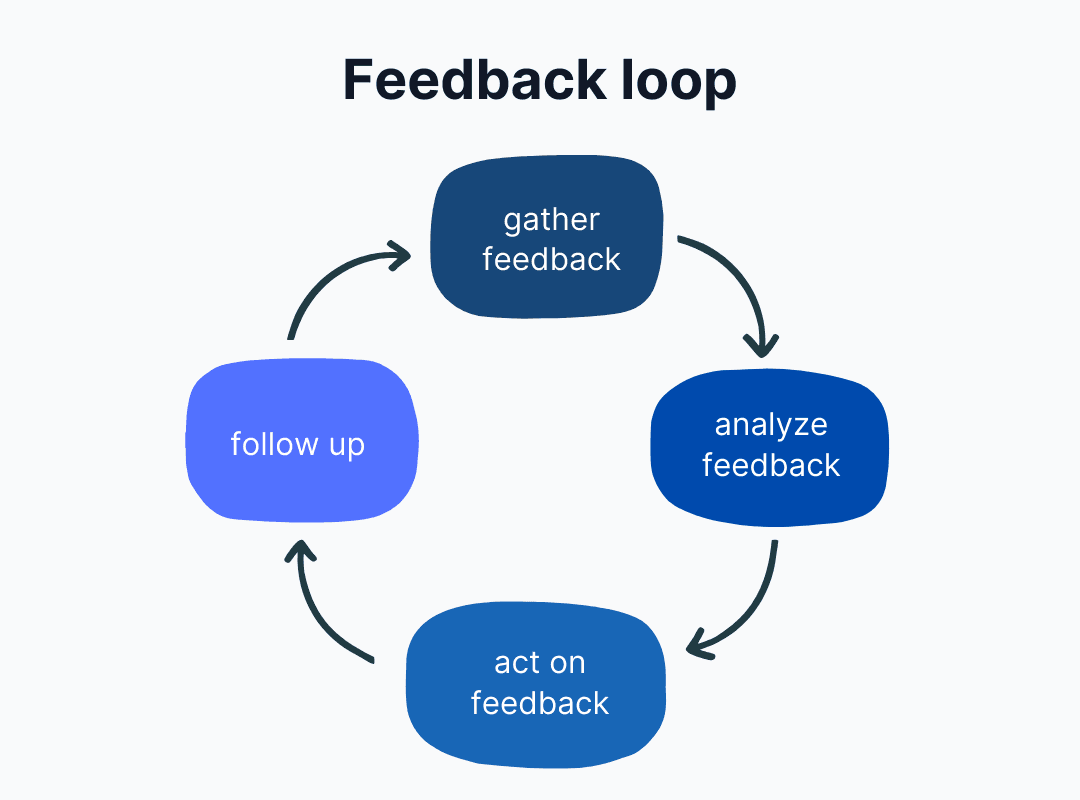
Source: Archbee.com
Collecting feedback from new employees allows you to find gaps in the learning process. It provides you with insights on what has worked for the employee and what hasn’t so you know what mistakes to avoid in the future.
The first part of this cycle, gathering feedback, is easy. You can do it through employee surveys and reports, or better yet, through open one-on-one conversations.
You can collect feedback by asking specific questions, such as:
- What’s the part of your job you enjoy doing the most?
- Do you find your managers approachable and helpful?
- Are you having any problems using the company software or systems?
The next part is a little harder. You need to analyze the feedback you’ve gotten from your employees and see if any negative patterns are emerging.
If multiple employees have found a particular aspect of their job difficult to learn, that may be something you should focus your efforts on.
Alternatively, if a part of your onboarding process is considered basic knowledge by incoming hires, maybe that’s something you can dispense with and make the process a little shorter.
The crucial part of the feedback loop is acting on what you’ve learned.
Failing to do so will not only mean you’re missing opportunities for improvement but may also disappoint your employees who could feel ignored.
Therefore, it’s important to try to implement the changes your employees are asking for, not just to improve the onboarding process, but also to increase job satisfaction among your new hires.
Finally, the last step is to follow up. Bring the changes you’ve made to the employees’ attention and assure them that your onboarding process is here to accommodate them and help them shine in their new role at your company.
Conclusion
The purpose of this article was to give you some actionable tips on how to make your onboarding process shorter.
Reading the article, you may have noticed that it actually shows you how to make onboarding more efficient, comfortable, and content-richer.
That’s because in this case, all of these improvements actually do a wonderful job reducing onboarding time as well.
Indeed, the more efficient your onboarding process becomes, the shorter it will be because every aspect that wastes time is slowly eliminated.
Remember, onboarding is a necessary, long-term process that requires a lot of attention.
Don’t undervalue or underestimate its importance and you should be left with an onboarding process that creates valuable members of your team who are happy and satisfied coming into work every day.
FAQ
Frequently Asked Questions
Run pre-boarding skill assessments. Test key competencies before day one, then personalize each hire’s plan so you skip what they already know and focus coaching where it’s needed. Break your onboarding into discrete skills (tools, processes, product knowledge, policies) and assess each one. Use trusted tools (e.g., validated testing platforms) and pair results with a clear training path, mentor support, and check-ins. Important: never skip legal, safety, or compliance topics—only trim redundant training. You’ll ramp people faster, keep them engaged, and uncover high-potential talent early.



